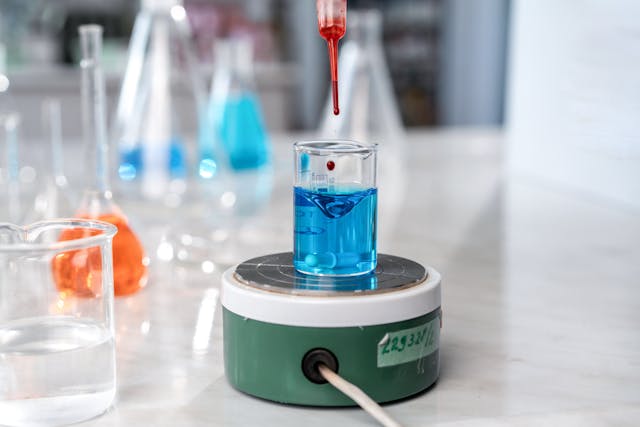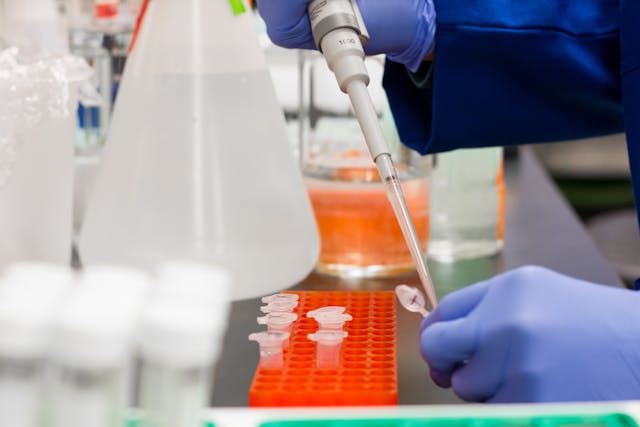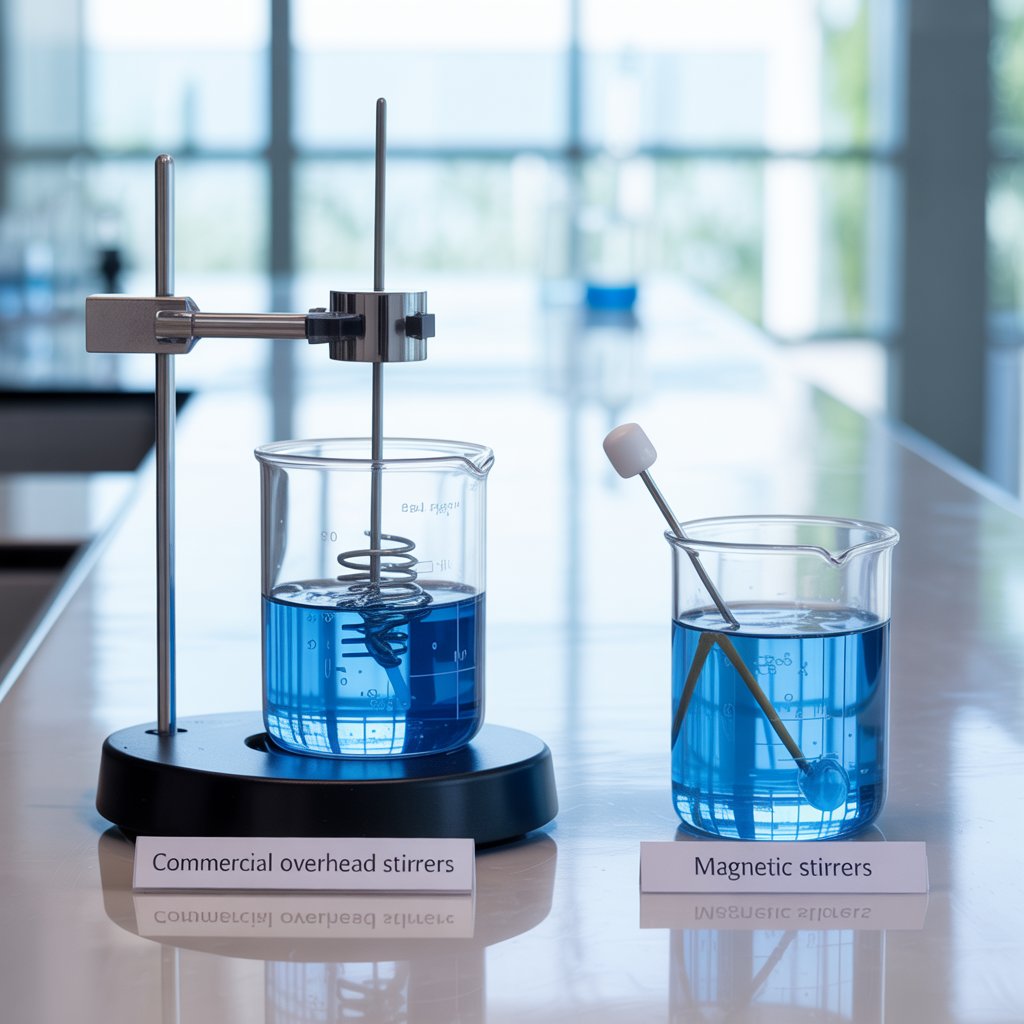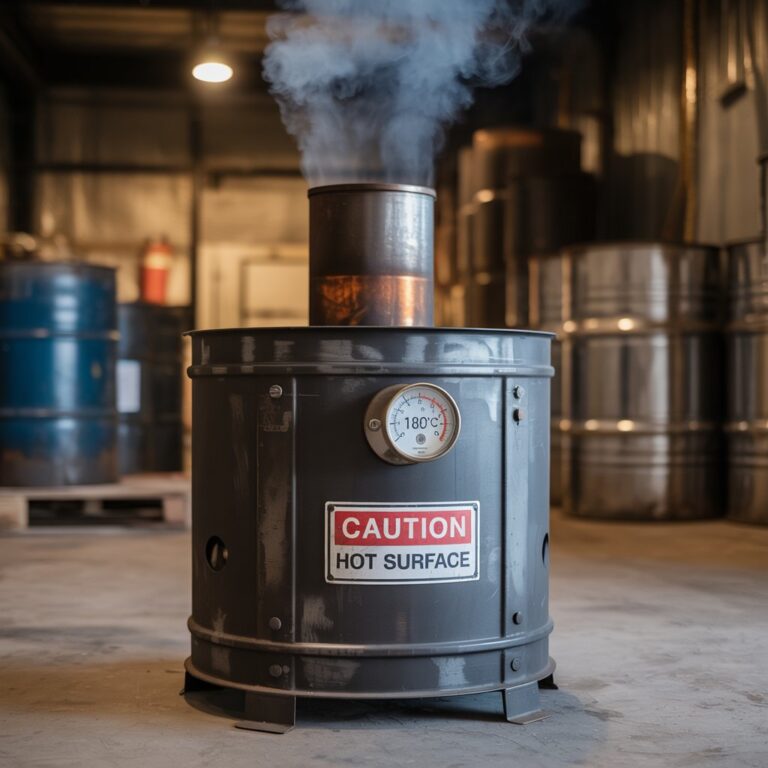Blending and stirring of materials form the basis of analyses in the laboratory, facilitating reactions, homogenization, dissolving, and suspension of materials. Overhead stirrers and magnetic stirrers have been seen to be two of the most utilised ones in this. Although both of them possess equivalent roles of mixing liquids, they are applicable in various conditions due to differences in sample size, viscosity, and compatibility. Proper selection of types can greatly enhance the results of experiments as well as efficiency.
This article provides an in-depth comparison between overhead and magnetic stirrers, describes the timing of each, and examines trends in stirring technology.

Overview of Overhead Stirrer
An overhead lab stirrer is a mechanical instrument applied to mix liquids with the assistance of a motor-powered shaft and an impeller or blade, which is submerged directly into the fluid.
These are heavy-duty stirrers, which are used for stirring:
- Pastes, gels, creams, and polymer solutions with high viscosities.
- Huge glasses that normally vary between hundreds of milliliters and tens of liters.
- Complex fluids, such as suspensions and emulsions of solid or soft solids.
The speed and the amount of torque that is used for stirring can be precisely controlled in cases where it is imperative that the shear force is maintained or the intensity of agitation. They are very common items in chemical synthesis, drug formulation, paint formulation, and cosmetic formulation.
What are Magnetic Stirrers
Magnetic stirrers are a tool with a base plate, having a rotating magnetic field, and a magnetic stirring bar inserted into the liquid-containing vessel. The stir bar is displaced by a spinning magnetic field, and this stirs the liquid.
Magnetic stirrers are usually preferred over large-volume, highly viscous solutions. It is normally used for:
- Preparation of solutions in chemistry labs.
- The dissolving of salts, powders, or buffers in water or solvents.
- Hot plate related to temperature-controlled reactions.
The magnetic stirrers have low levels of noise, are easily cleaned, and can be applied to closed systems, as they do not physically disrupt the vessel.
Key Differences Between Overhead and Magnetic Stirrers
Sample Volume:
- Overhead Stirrers: All right when medium or large amounts (usually 500mL up to 20+L).
- Magnetic Stirrers: Suitable for small to large volumes (typically to 2 liters).
Viscosity Handling:
- Overhead Stirrers: These are tailored to use in high-viscosity substances such as creams, gels, and suspensions.
- Magnetic Stirrers: Suitable for waters or solvent-based solutions of low viscosity.
Fluid: contact:
- Overhead Stirrers: They possess a shaft and an immersed impeller.
- Magnetic Stirrers: There is minimal contamination as only a small magnetic stir bar touches the fluid.
Stirring Power:
- Overhead Stirrers: Offer low speed, high torque, and powerful mechanical agitation.
- Magnetic Stirrers: They have a low power, and it is affected by the magnetic field strength.
Contamination Risk:
- Overhead Stirrers: There is a greater risk because of direct contact with the fluid through mechanisms.
- Magnetic Stirrers: There are low risks, especially with closed containers.
Noise Level:
- Overhead Stirrers: somewhat loud.
- Magnetic Stirrers: run very quietly.
Cost:
- Overhead Stirrers: These are usually more costly because they are durable and well-equipped.
- Magnetic Stirrers: Cheaper and cost-effective.
When to Use Each Stirrer
Use Overhead Stirrers When:
- You have sticky or semi-solid materials such as creams, slurries, or resins.
- The sample size is more than 2 liters when the homogeneity of the whole batch is vital.
- You require powerful mechanical stirring, high torque, or steady shear conditions.
- You are doing the scale-up experiments or the pilot production.
Overhead stirrers are a must in research labs, being used to develop a formulation or enter into some sort of chemical processing where power and control are demanded.
Use Magnetic Stirrers When:
- You are combining water products or solvents of low or medium viscosity.
- The volume of the sample is also small (smaller than 1-2 liters).
- It is stirred in a closed vessel, e.g., a reaction flask or in sterile preparations.
- Quiet, steady stirring and little operator attention are desired by you.
The magnetic stirrers are best suited when academic laboratories are used, for routine analytics, or for biotechnology endeavors, where contamination has to be low.

Emerging Trends in Stirring Technology
Both overhead and magnetic stirring equipment are being continuously improved by companies such as IKA, due to advances in technology. 50% of organizations plan on incorporating automation and AI into their activities. Some of the interesting trends are:
- Computer Controlled and Intelligent Interface: Most new stirrers have programmable profiles of control speed, touch screens, and digital read-out to have a higher level of control and repeatability.
- Wireless Monitoring: Compatibility with lab software and mobile application enables users to monitor and adjust stirring parameters even when they are not near the device and enhances lab automation.
- New perks in magnetic stirring: New and improved magnetic stirrers are available with multi-point stirring, enabling keeping more vessels under stirring at a time on one platform- very beneficial in high-throughput labs.
- Hybrid Systems: Hybrid stirrers, which mix gently using magnetic and intensively using overhead mixers, are currently being developed by some manufacturers where there is a need to change between gentle and intensive mixing.
- Better Safety and Energy conservation: New models are constructed with overheat protection, energy-saving functionalities, and noise-reduction to enhance the safety and ergonomics in the laboratory.
These are leading to a change to more practical, economical, and easier-to-use laboratory mixing equipment.
Key Takeaway
The decision as to whether to use an overhead stirrer or a magnetic stirrer is, in the end, left to the actual demands of the laboratory that you are in. Although overhead stirrers are highly effective when the necessary mixing activity is at high levels and the volumes to be mixed are large, the magnetic stirrers excel in precision, simplicity, and convenience in conducting smaller experiments of a more routine nature.




